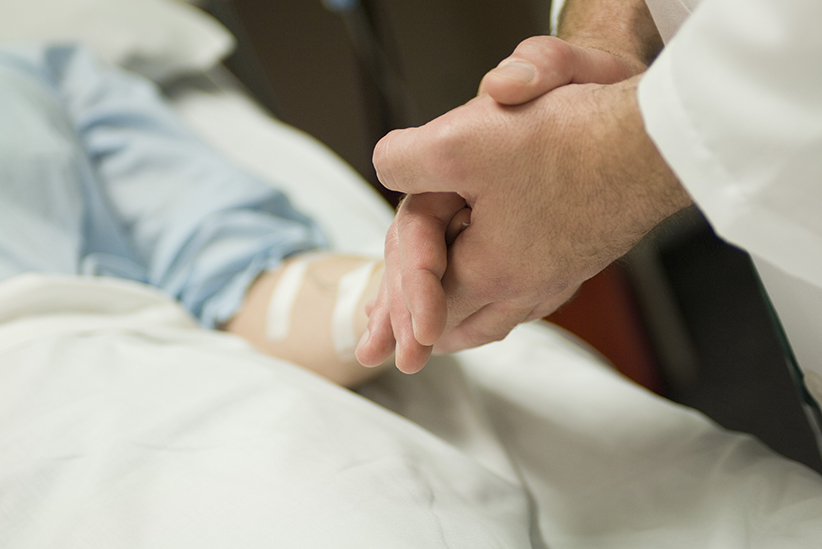The intersection of freedom of conscience and assisted dying
One MP’s views on balancing the needs of patients and doctors who have personal issues providing assisted dying
Doctor holding patient’s hand, cropped tight. Michele Constantini/Getty Images
Share

Garnett Genuis, the Conservative MP for Sherwood Park—Fort Saskatchewan in Alberta, has served on the Physician-Assisted Dying Committee.
Parliament will imminently be dealing again with the issue of physician-assisted suicide / euthanasia. If government legislation follows the direction given in the report of the Liberal-dominated joint committee, we are in for (among other things) a significant change in the way Canadian law treats freedom of conscience.
The court was clear in Carter that nothing in their decision would require anyone to be involved in euthanasia or assisted suicide if they did not wish to be. In this respect, I think the court got it right. Freedom of conscience is protected by the Charter itself. Euthanasia and assisted suicide were considered murder until just this year; it’s understandable that many healthcare providers remain uncomfortable with it.
One might normally expect that every person in a particular field would be willing to fulfill the core functions of that field. A nuclear physicist who does not belief in nuclear energy might do well to choose a different career, rather than invoking ‘conscience’ to avoid participation. But, taking life is not a core function of medicine. Most people involved in healthcare are there because they want to help people improve their health status. Those who have signed up for this career hoping to preserve and protect life should be accommodated as much as possible – especially since the rules of the game are changing mid-stream.
Some confusion often arises with respect to the issue of “referral” in healthcare. The Parliamentary joint committee studying this issue argued that doctors should not be forced to perform euthanasia, but that they should be required to ‘refer’ for it. This is akin to being a country that does not perform capital punishment or torture, but extradites people to countries where they will face capital punishment or torture. It doesn’t take much of a background in moral philosophy to understand that formally passing someone off to receive treatment elsewhere that you don’t want to provide yourself is not exactly a way to keep your hands clean. Notably, Article 3 of the UN Convention against Torture says explicitly – “No State Party shall expel, return or extradite a person to another state where there are substantial grounds for believing that he would be in danger of being subjected to torture.” Extradition and referral are clear forms of moral complicity.
It is important to underline that medical referral is not simply providing information or facilitating an orderly transfer of records. These things should happen in every case. But referral is a formal transfer of care from one clinician to another. The referring clinician isn’t just showing the patient where to go; she is effectively doing the transfer work herself. Understandably, therefore, clinicians are almost never expected to provide referrals for things that they would regard as scientifically or ethically inadvisable.
Quebec’s euthanasia law presents what some have called an “elegant” solution – the requirement that clinicians refer patients to a third party, who then refers the patient to a provider. Notably, though, this really amounts to creating a distinction without a difference. To extend the extradition analogy, this is like sending someone to a country where they will face torture, but doing so by way of a facilitating third country.
For those seeking to provide access without infringing conscience, there is a very straight-forward solution available. Health authorities could compile lists of willing providers, and patients could be made aware of the law and of their ability to access willing providers. This need not be cumbersome for anyone, but would also ensure that we are not chasing good clinicians out of the profession or the country because they don’t want to be involved in something which they find objectionable. Those who are serious about autonomy should be looking for solutions which respect the autonomy of both patients and clinicians.